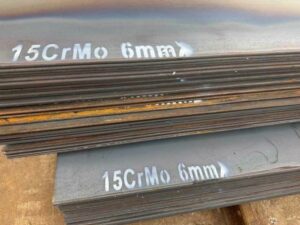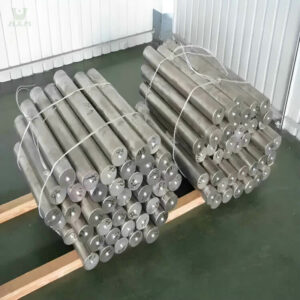Optimizing the magnetic properties of M36 silicon steel through the cold rolling process involves carefully controlling the rolling parameters and annealing treatments to achieve the desired magnetic performance. The cold rolling process is a crucial step in enhancing the magnetic properties of electrical steel, including M36 silicon steel. Here’s how you can optimize the magnetic properties:
Material Selection:
Start with high-quality M36 silicon steel with appropriate chemical composition and grain orientation to ensure a good foundation for magnetic properties optimization.
Cold Rolling Reduction:
Cold rolling involves passing the silicon steel through rollers to reduce its thickness. Controlling the cold rolling reduction is crucial as it affects the grain structure and magnetic properties. Higher reduction ratios can lead to elongated and aligned grains, resulting in improved magnetic properties.
Annealing:
After cold rolling, the material is annealed to relieve stress and recrystallize the grain structure. The annealing process can be tailored to achieve specific magnetic properties. Annealing temperature and time can influence grain growth and crystallographic orientation.
Texture Control:
Grain orientation significantly impacts the magnetic properties of silicon steel. During cold rolling and annealing, efforts should be made to promote a favorable crystallographic texture that enhances magnetic performance. Annealing processes like two-step annealing or multi-step annealing can help achieve desired textures.
Final Annealing:
After the initial annealing, a final annealing process can be applied to further refine the grain structure and texture, ultimately improving magnetic properties.
Surface Insulation:
For applications requiring reduced eddy current losses, the cold-rolled silicon steel may undergo processes to insulate the surface with an oxide layer or coatings to minimize eddy current circulation.
Quality Control:
Throughout the cold rolling and annealing processes, rigorous quality control measures should be in place to ensure consistent and reproducible magnetic properties.
Testing and Characterization:
Magnetic testing methods such as Epstein frame tests, single-sheet testers, or toroidal cores can be used to evaluate the magnetic properties of the processed M36 silicon steel. These tests provide critical data on core loss, permeability, and other relevant magnetic parameters.
It’s important to note that optimizing the magnetic properties of M36 silicon steel is a delicate balance between processing parameters, annealing techniques, and material quality. Manufacturers often employ advanced metallurgical techniques and simulation tools to fine-tune these processes and achieve the desired magnetic performance for specific applications. If you’re working with M36 silicon steel, collaborating with experienced steel suppliers or metallurgical experts can help ensure successful optimization of magnetic properties.



















